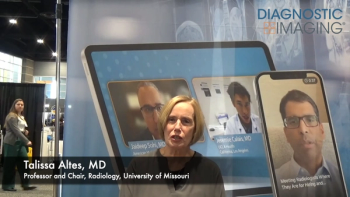
Report from SIR: East and West shake hands over liver RFA
Despite distinctive boundaries shaping their work, Asian and European researchers have arrived at the same conclusion: Radiofrequency ablation is as effective as surgical resection for the treatment of single small hepatocellular carcinomas.
Despite distinctive boundaries shaping their work, Asian and European researchers have arrived at the same conclusion: Radiofrequency ablation is as effective as surgical resection for the treatment of single small hepatocellular carcinomas.
"RFA should be considered a first-line therapeutic option for this patient population," said Dr. Riccardo Lencioni, an interventional radiologist from the University of Pisa in Italy.
Lencioni spoke Friday during a press conference at the 2006 Society of Interventional Radiology meeting in Toronto.
Although surgery remains the standard of care for HCC, most patients have a limited hepatic functional reserve because of coexisting cirrhosis. They cannot tolerate surgical resection. RFA offers these patients a nonsurgical option that preserves healthy tissue, is well tolerated, and has a short recovery time, Lencioni said.
Lencioni and colleagues performed a retrospective case-control review of 162 patients from the Tumor Radiofrequency Ablation Italian Network (TRAIN). They evaluated survival, local tumor progression, and recurrence rates for surgery and RFA. Overall three-year survival rates were 65% and 72% for surgery and RFA, respectively. While the local tumor progression rate was significantly higher in the RFA group compared with surgery, the incidence of tumor recurrence was similar between the two groups.
Lencioni's findings matched those published recently by researchers in China who found RFA to be as effective as surgical resection in the treatment of solitary small HCC. The Chinese study entailed the first randomized controlled trial with a large patient population sample comparing both techniques (Ann Surg 2006;243:321-328).
Such a trial has never been possible in the West for various reasons, but the Chinese study was designed to test the same hypothesis as the Italian one, Lencioni said.
"The results are very similar, if not identical. The data from the Chinese study prove RFA can offer a choice that is equivalent to surgery for these patients," he said.
Newsletter
Stay at the forefront of radiology with the Diagnostic Imaging newsletter, delivering the latest news, clinical insights, and imaging advancements for today’s radiologists.




























